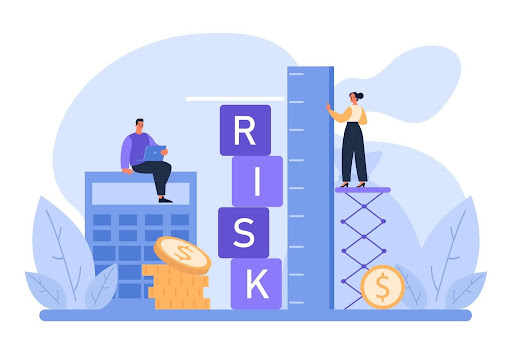
Liquidity risk is one of the most pressing concerns for businesses and financial institutions, especially in today's unpredictable economic environment. With fluctuating interest rates, market volatility, and unforeseen financial shocks, companies must have a solid strategy for liquidity risk management to maintain financial stability. The ability to manage and optimize liquidity has become increasingly crucial as global markets face unprecedented challenges and rapid changes.
Without proper liquidity planning, businesses can face severe consequences, including operational disruptions, financial distress, and even insolvency. In this article, we will explore how to manage liquidity risk, identify key warning signs, and discuss proactive strategies to ensure financial stability—even in uncertain markets. Understanding these elements is crucial for building resilient financial operations.
What is Liquidity Risk, and Why is it a Top Concern?
Liquidity risk refers to the inability of a business or financial institution to meet its short-term financial obligations due to inadequate cash flow or access to funding. In simple terms, it's the risk of running out of cash when needed. This fundamental aspect of financial management has become increasingly complex as businesses navigate global market uncertainties and evolving financial landscapes.
This issue is particularly critical in volatile markets where external shocks—such as economic downturns, supply chain disruptions, or rising interest rates—can quickly deplete liquidity. The interconnected nature of modern markets means that liquidity challenges can spread rapidly across industries and regions, making effective liquidity risk management essential for business survival. Poor liquidity risk management can lead to:
- Financial distress – Companies may struggle to pay suppliers, employees, or creditors, leading to strained relationships and loss of trust.
- Operational disruptions – A cash crunch can halt essential business activities, causing inefficiencies and missed growth opportunities.
- Business insolvency – Persistent liquidity issues can ultimately result in bankruptcy, forcing companies to shut down.
Identifying Liquidity Risk: Key Indicators and Warning Signs
Understanding the causes and warning signs of liquidity risk is the first step toward effective management. Organizations must develop comprehensive strategies to monitor, manage, and mitigate these risks while maintaining operational efficiency and growth potential.
Common Causes of Liquidity Risk in Businesses and Financial Markets
Several factors contribute to liquidity risk, many of which stem from poor financial planning or external market conditions. Understanding these causes is crucial for developing effective risk management strategies and maintaining financial stability. Below are some of the most common causes:
1. Excessive Reliance on Short-Term Borrowing
Businesses that rely too heavily on short-term loans or credit lines can quickly run into trouble, especially if interest rates rise or lenders tighten credit conditions. This vulnerability becomes particularly acute during economic downturns when credit markets may freeze up suddenly. Organizations that use short-term debt to fund long-term assets are especially susceptible to liquidity problems when refinancing becomes difficult or expensive.
2. Poor Management of Cash Reserves and Working Capital
A lack of focus on cash flow forecasting and working capital optimization can lead to liquidity shortages when unexpected expenses arise. Many businesses fail to maintain adequate cash buffers or efficiently manage their working capital cycle, leaving them exposed to sudden cash demands. This often results from inadequate financial planning systems or overconfidence in stable market conditions.
3. Delayed Customer Payments and Rising Accounts Receivable
When customers take longer to pay invoices, businesses may struggle to cover their own financial obligations, creating a ripple effect of cash shortages. This problem can compound quickly, especially in industries with long payment terms or during economic downturns when customers may stretch payment cycles to manage their own cash flow challenges.
4. Unexpected Market Shocks, Recessions, or Supply Chain Disruptions
External factors—such as financial crises, geopolitical events, or disruptions in supply chains—can dramatically impact liquidity, especially for businesses with thin margins. These events often expose underlying weaknesses in liquidity management systems and can quickly transform manageable challenges into serious financial crises.

Liquidity Risk Warning Signs
Recognizing early warning signs of liquidity risk allows businesses to take corrective action before it's too late. By monitoring these indicators regularly, organizations can identify potential problems and implement solutions proactively.
Key indicators include:
- Deteriorating liquidity ratios – A declining Current Ratio, Quick Ratio, or an extended Cash Conversion Cycle can indicate weakening financial health. Regular monitoring of these metrics against industry benchmarks and historical trends provides valuable insights into liquidity positions.
- Frequent delays in payments – If a business struggles to pay vendors, suppliers, or creditors on time, it's a red flag. This often indicates underlying cash flow problems that require immediate attention.
- Increased borrowing costs – A rising cost of borrowing or reduced access to credit lines suggests lenders see the company as a higher risk. This can create a negative spiral where higher borrowing costs further strain liquidity.
- High dependency on asset sales – Selling off assets just to meet short-term obligations indicates a potential liquidity crisis. This unsustainable practice often signals deeper financial problems requiring comprehensive solutions.
By staying aware of these signs and maintaining robust monitoring systems, businesses can proactively address liquidity risks before they become unmanageable. Regular assessment of these indicators, combined with prompt corrective action, forms the foundation of effective liquidity risk management.
How to Manage Liquidity Risk: Proactive Strategies for Stability
Effective liquidity risk management requires a structured approach. Below are six key strategies businesses can implement to safeguard financial stability.
Strengthening Cash Flow Management
A robust cash flow management strategy ensures that a company maintains sufficient liquidity to meet its obligations. Regular cash flow forecasting helps businesses predict inflows and outflows, allowing them to prepare for potential shortfalls and plan accordingly. Organizations should focus on speeding up receivables, perhaps by offering discounts for early payments or enforcing stricter payment terms.
To effectively mitigate liquidity risk, controlling discretionary spending plays a crucial role in preserving cash reserves and maintaining adequate liquidity buffers. This requires a systematic approach to monitoring and managing cash positions, coupled with clear policies for cash management across all organizational levels.
Optimizing Working Capital to Improve Liquidity
Working capital—the difference between current assets and current liabilities—is a critical liquidity metric. Understanding how to mitigate liquidity risk effectively requires careful attention to working capital optimization. Organizations must manage inventory efficiently to avoid excessive stockpiling that ties up cash while streamlining supply chain processes.
Effective working capital management demands a balanced approach that considers both operational needs and financial efficiency. This includes:
- Managing inventory efficiently through improved forecasting
- Negotiating better payment terms with suppliers
- Implementing automated systems for accounts payable and receivable
Diversifying Funding Sources
Over-reliance on a single form of financing increases vulnerability to liquidity risk. Organizations should establish multiple credit lines with different banks to avoid dependence on a single lender. Exploring alternative financing options, such as trade credit, leasing, or peer-to-peer lending, provides additional flexibility.
Moreover, retaining earnings to build internal liquidity reserves helps reduce reliance on external financing and strengthens overall liquidity risk management capabilities. A diversified funding strategy ensures organizations can access capital when needed, even during challenging market conditions.
Implementing a Liquidity Contingency Plan
A comprehensive liquidity contingency plan prepares businesses for unexpected cash flow disruptions. This crucial component of liquidity risk management involves defining emergency funding sources and establishing clear protocols for crisis response.
Organizations should develop detailed response strategies for various scenarios, ensuring they can act quickly when liquidity challenges arise. Regular testing and updating of these plans ensure their effectiveness in real crisis situations. The plan should also include clear communication protocols and decision-making frameworks for various levels of liquidity stress.

Conducting Liquidity Stress Testing
Regular stress testing helps evaluate how a business would perform under different liquidity stress scenarios. This process involves modeling various challenging situations and assessing the adequacy of liquidity buffers. Organizations looking to effectively manage liquidity risk should use these insights to adjust their financial strategies and improve overall resilience to market shocks.
The results of stress testing often reveal areas where additional liquidity risk mitigation measures may be needed. Stress testing should consider both institution-specific and market-wide scenarios to provide a comprehensive view of potential risks.
Leveraging Technology for Liquidity Management
Modern financial technology has transformed how organizations manage liquidity risk. Advanced software provides real-time insights into cash positions and facilitates accurate forecasting. AI-driven analytics help anticipate potential cash shortfalls, while automated systems streamline transaction processing and settlement.
These technological solutions enable more efficient and effective liquidity management while reducing operational risks and improving the organization's ability to mitigate liquidity risk. Integration of these technologies with existing financial systems can provide a more comprehensive view of liquidity positions and enhance decision-making capabilities.
The Importance of Liquidity Risk Management for Long-Term Stability
Liquidity risk is an unavoidable part of financial management, but with the right strategies in place, businesses can navigate uncertainty with confidence. As market conditions become increasingly volatile, understanding how to manage liquidity risk effectively becomes crucial for organizational sustainability.
Businesses that proactively manage liquidity risk are better positioned to withstand economic downturns, seize growth opportunities, and maintain long-term financial stability. By taking a disciplined approach to liquidity risk management, companies can transform what might otherwise be a significant challenge into a competitive advantage. Organizations that implement comprehensive strategies to mitigate liquidity risk build stronger foundations for sustainable growth and operational resilience.
The question isn't whether your organization will face liquidity challenges, but how well prepared you'll be when they arise. Start optimizing your liquidity strategy today to safeguard your company's future and ensure continued success in an increasingly uncertain business environment.
